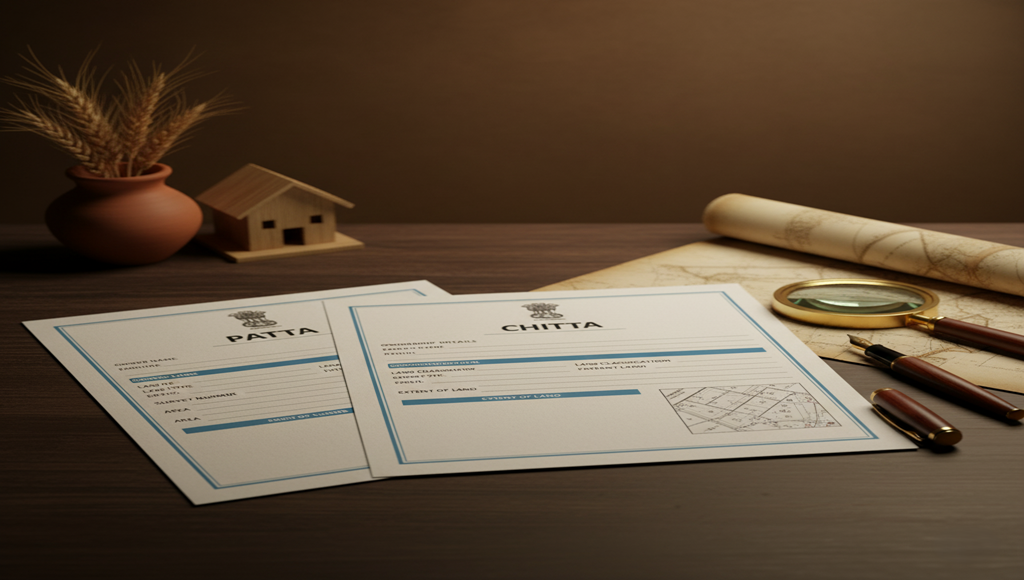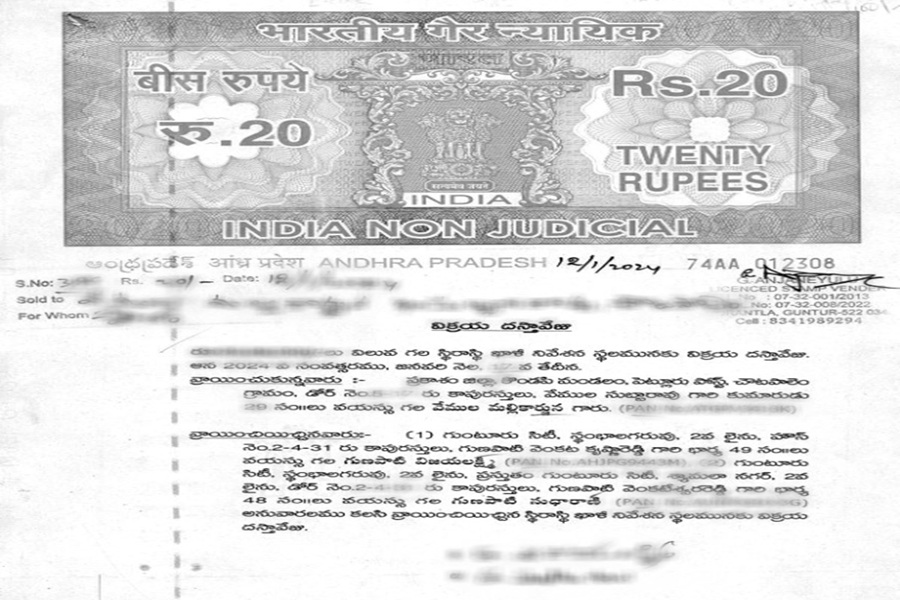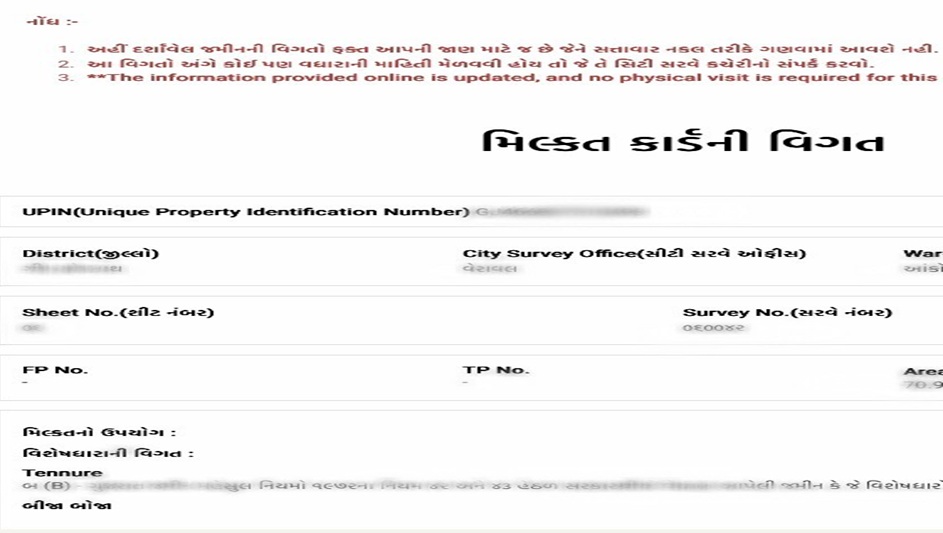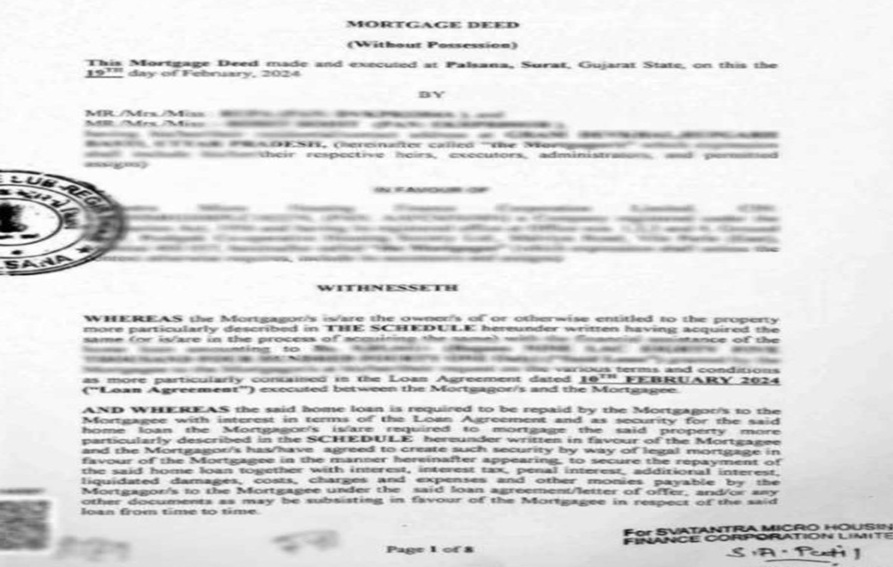Patta Chitta serves as a vital document in property ownership, especially in certain regions of India. It combines the concepts of Patta, which indicates ownership, and Chitta, which details land records. This document is crucial for anyone involved in property transactions, as it ensures clarity and legal backing for land ownership.
The significance of Patta Chitta extends beyond mere documentation. It plays an essential role in protecting the rights of land owners and facilitating smooth land transactions. Understanding the process of obtaining and verifying Patta Chitta is key for potential buyers and land owners alike, as it can prevent disputes and legal complications.
In the era of digitization, accessing Patta Chitta documents online has become more straight forward. This transition not only enhances transparency but also aids in efficiently managing land records. For anyone looking to navigate the realm of property investment, grasping the nuances of Patta Chitta is indispensable.
Key Takeaways
- Patta Chitta verifies land ownership and records details about the land.
- Understanding its significance helps prevent legal issues in property sales.
- Online access to Patta Chitta improves transparency in land transactions.
What Is Patta Chitta
Patta Chitta refers to a set of land records maintained in certain Indian states, particularly in Tamil Nadu. These records play a crucial role in land administration.
Patta typically denotes the ownership document for a specific piece of land. It proves that an individual is the rightful owner and has rights to the land.
Chitta, on the other hand, contains important details about the land, such as its size, location, and type of ownership. It helps in the assessment of land for various administrative purposes.
The combination of Patta and Chitta ensures transparency in land ownership and helps in resolving disputes.
Key features include:
- Ownership Details: Identifies the landowner.
- Land Description: Provides specifics on the land.
- Revenue Information: Lists revenue payable for the land.
These records are essential for various transactions, including buying, selling, or mortgaging land. They serve as a reference for government authorities and help in maintaining the integrity of land titles.
Accessing Patta Chitta is often required for legal purposes, such as applying for loans or property registrations. It is advisable for land owners to regularly verify their records to ensure accuracy and avoid potential disputes.
The Significance of Patta Chitta in Property Transactions
Patta Chitta serves as a crucial document in property transactions, especially in India. It provides proof of ownership and is essential for legal recognition of land titles.
Key Roles of Patta Chitta:
- Legal Authentication: It verifies ownership and details about the property.
- Transfer of Rights: When buying or selling property, the document facilitates the transfer of rights effectively.
- Conflict Resolution: Helps resolve disputes by establishing the rightful owner of the property.
In property dealings, it is often required by banks and financial institutions when applying for loans. This ensures that the property can be legally mortgaged.
Importance for Buyers:
For buyers, verifying the Patta Chitta of a property ensures:
- Clear Title: Confirms that the seller has legitimate ownership.
- No Encumbrances: Assures that the property is free from legal disputes or claims.
Importance for Sellers:
For sellers, having a clear Patta Chitta simplifies the selling process. It enhances buyer confidence and expedites negotiations.
In summary, every property transaction benefits from the presence of Patta Chitta, making it a vital document for both buyers and sellers.
Understanding Patta
Patta is a vital document in India that serves as proof of land ownership. It is issued by state governments and recognized as an important legal record.
The document includes key details such as:
- Landowner’s name
- Survey number
- Type of land
- Area of the land
- Boundaries
Patta also indicates any encumbrances or restrictions on the property. It helps in establishing the rights of the landowner.
Obtaining Patta is crucial for buying or selling land. Without it, one may face challenges in proving ownership.
In many states, Patta can be accessed online through government portals. This modernization simplifies the process for landowners.
Updating the Patta in case of ownership changes is essential. Failure to do so can lead to legal disputes and confusion over land rights.
For landowners, possessing a Patta grants the ability to apply for loans and claim government benefits related to agriculture and property development.
Understanding Chitta
Chitta is a significant concept in Indian philosophy and spirituality. It refers to the mind’s storage of impressions, memories, and subconscious thoughts.
Chitta is part of the three functions of the mind, which include:
- Manas: The faculty of reasoning and thought.
- Buddhi: The capacity for understanding and judgment.
- Chitta: The reservoir of experiences and emotions.
This storage influences behavior and shapes an individual’s perception of reality. Chitta can be affected by various factors, including experiences, beliefs, and emotional states.
Chitta also plays a vital role in meditation practices. A calm and clear Chitta allows for deeper states of awareness and insight. By managing Chitta, practitioners aim to achieve mental clarity and emotional balance.
Understanding Chitta involves recognizing its impact on daily life and decision-making. It helps individuals cultivate mindfulness and self-awareness. By observing their thoughts and emotions, they can work towards a more harmonious existence.
Chitta is interconnected with concepts like karma and samsara in understanding one’s life journey. Awareness of Chitta can lead to personal transformation and growth.
The Process of Obtaining Patta Chitta Documents
Obtaining Patta Chitta documents involves several steps. This process ensures that land rights are officially recorded and recognized.
- Application Submission: Individuals must submit an application to the local revenue office. It usually includes personal identification and proof of land ownership.
- Documentation Required:
- Identity proof (Aadhar, PAN card, etc.)
- Land ownership documents (sale deed, property tax receipts)
- Encumbrance certificate, if applicable
- Verification Process: After submission, the revenue authorities will verify the documents. They may conduct a site visit to confirm the land’s status.
- Issuance of Patta Chitta: Upon successful verification, the document is issued. This process can vary in duration depending on the jurisdiction.
- Online Access: Many states provide online portals for applying. Applicants can track the status of their application through these platforms.
Maintaining organized records and ensuring all documentation is complete can expedite the process. It is advisable for applicants to follow up with the authorities to avoid delays.
Patta Chitta Online Application
The Patta Chitta online application process allows individuals to obtain land records efficiently. This digital initiative simplifies accessing and managing land ownership documents.
Steps to Apply Online:
- Visit the Official Website: Access the relevant state government’s land record portal.
- Register/Login: Create an account or log in using existing credentials.
- Select Application Type: Choose the option for Patta Chitta.
- Fill in Details: Provide required information such as:
- Name
- Address
- Land survey number
- Any additional details as specified
- Upload Documents: Attach necessary documents like identity proof, land documents, and any other required paperwork.
- Submit Application: After verifying all information, submit the application.
- Track Status: Use the application number to monitor the progress online.
Required Documents:
- Identity proof (Aadhaar, Passport, etc.)
- Land ownership documents
- Survey records (if applicable)
Applicants should ensure that all details are accurate to avoid delays. Integration of this process has significantly reduced paperwork and streamlined access to land records.
How to Verify Patta Chitta Authenticity
Verifying the authenticity of a Patta Chitta is essential for land ownership and legal purposes. Several steps can ensure its validity.
- Check the Issuing Authority
Patta Chitta should be issued by the appropriate government office. Verify the information on official websites or local land revenue offices. - Cross-Reference Details
Ensure that the details on the Patta Chitta match with other documents like the sale deed or previous land records. Look for land survey numbers and owner names. - Use Online Portals
Many state governments provide online services to verify Patta Chitta. Enter details such as the district, taluk, and the Patta number on the portal. - Physical Inspection
Visit the relevant local government office. Request a copy of land records for a physical comparison with your Patta Chitta. - Consult Legal Experts
Engaging with legal professionals can provide insights into the authenticity and any potential disputes regarding the Patta Chitta. - Beware of Forgery
Look for signs of alteration, such as inconsistencies in fonts, paper quality, and official seals.
Confirming these aspects can help ensure the authenticity of Patta Chitta. It is advisable to keep documentation organized for future reference.
Legal Aspects of Patta Chitta
Patta Chitta serves as an important legal document in land ownership within various Indian states. It delineates the rights of landowners and serves as evidence of ownership.
The legal framework surrounding Patta Chitta includes several laws and regulations. Key legal aspects include:
- Recognition of Ownership: Patta Chitta grants recognized ownership rights to individuals, ensuring security over their land.
- Land Records Maintenance: It aids in the systematic maintenance of land records, facilitating easy access for disputes or queries.
- Transfer of Rights: The document is often necessary for transferring land ownership, making it crucial for property transactions.
Individuals must obtain Patta Chitta through authorized government offices. The application process usually includes:
- Document Submission: Relevant documents such as identity proof and land survey documents must be submitted.
- Site Inspection: Government officials may conduct inspections to verify the details provided.
- Approval Process: Once the verification is complete, the Patta Chitta is issued in the name of the applicant.
Patta Chitta is also essential in legal disputes regarding land ownership. Courts often rely on this document to adjudicate matters related to land rights and ownership claims.
Understanding the legal implications of Patta Chitta is crucial for landowners to safeguard their rights and navigate property transactions effectively.
Errors and Rectification in Patta Chitta
Errors in Patta Chitta can arise from various sources, including data entry mistakes, outdated information, or discrepancies in land records. Common issues include:
- Incorrect Land Ownership: Names may be misspelled or outdated.
- Boundary Discrepancies: Misalignment of land boundaries can occur.
- Omitted Details: Important information may not be recorded.
To rectify these errors, individuals must follow a systematic process:
- Identify the Error: Review the Patta Chitta document for inaccuracies.
- Gather Supporting Documents: Collect necessary documents, such as prior titles or sale deeds.
- Submit an Application: Approach the relevant revenue department with the collected documents.
- Pay Required Fees: There might be a processing fee involved for corrections.
- Follow Up: Keep track of the application status until resolution.
It is essential to ensure that all corrections are accurately reflected in official records. Regular checks can help maintain the integrity of Patta Chitta documents. Individuals should be proactive in addressing any observed errors to avoid future disputes or complications.
Role of Patta Chitta in Land Sales
Patta Chitta serves as a crucial document in land sales in many regions. It establishes ownership and details the land’s boundaries and area. This document is essential for both buyers and sellers.
When a property is sold, the presence of a Patta Chitta can simplify the transaction process. Buyers can verify the seller’s ownership, reducing the risk of disputes. Additionally, it often eases the process of securing loans from banks.
The role of Patta Chitta can be summarized as follows:
- Ownership Verification: Confirms that the seller has legal rights to the land.
- Boundary Definition: Clearly outlines the extent of the property, preventing encroachments.
- Ease of Transactions: Facilitates smoother sales and reduces legal complexities.
In many jurisdictions, not having a Patta Chitta can lead to disputes. Buyers should ensure that the document is up to date and properly registered. This step is vital for avoiding future legal challenges related to property rights.
Ultimately, Patta Chitta acts as a safeguard for all parties involved in land transactions, fostering transparency and trust in the process. It is a foundational element in real estate dealings, aiding in establishing clear titles.
Implications of Patta Chitta for Buyers
Patta Chitta serves as a crucial document for land buyers in India, providing legal proof of land ownership. It is essential for establishing the rights and responsibilities of the landowner.
Benefits for Buyers
- Legal Security: Buyers gain assurance that the land is legally recognized, reducing the risk of disputes.
- Ease of Transactions: Having Patta Chitta simplifies the buying process, making it smoother for all parties involved.
- Accessibility: Buyers can easily find property details through online portals or local government offices.
Responsibilities
Buyers must ensure that the Patta Chitta is updated and accurate.
- Verify Details: It is crucial to cross-check all information, including land area, boundaries, and ownership history.
- Adhere to Local Laws: Buyers should understand any local regulations pertaining to land use and development.
Potential Issues
Buyers should be aware of possible complications.
- Disputes Over Ownership: Previous ownership claims may lead to legal challenges.
- Land Use Restrictions: Certain lands may come with limitations based on zoning laws.
Being informed about the implications of Patta Chitta enables buyers to make educated decisions. It supports secure, compliant, and stress-free land transactions.
Digitization and Its Impact on Patta Chitta Records
The digitization of Patta Chitta records has transformed land management in India. This shift has streamlined access to important land ownership documents.
Key Benefits of Digitization:
- Accessibility: Digital records enable easier access for landowners and authorities.
- Efficiency: Streamlined processes reduce the time needed for record retrieval and updating.
- Transparency: Digital systems enhance transparency by minimizing chances of tampering or corruption.
Patta Chitta records once stored in physical formats often faced issues like loss or destruction. Digital formats offer better preservation and security of critical information.
Challenges Faced:
- Digital Literacy: Some users may lack the skills to navigate digital platforms efficiently.
- Technical Issues: System outages or software glitches can temporarily hinder access to records.
- Data Privacy: Concerns regarding the protection of sensitive information are paramount.
Governments are implementing training programs to enhance digital literacy. This initiative aims to ensure that all stakeholders can navigate digitized systems effectively.
The impact of digitization is evident. It promotes better governance and provides a framework for future innovation in land record management. Digital Patta Chitta records signify a significant step towards a more organized and accessible land management system.
Frequently Asked Questions
This section addresses common queries regarding Patta Chitta, including access, downloading records, and verifying authenticity. These insights help clarify the processes and requirements involved.
How can I access Patta Chitta documents online?
Patta Chitta documents can be accessed through the official website of the revenue department of the respective state. Users need to navigate to the land records section and enter specific details to retrieve the documents.
What is the process for downloading Patta Chitta land records?
To download Patta Chitta land records, individuals must visit the official portal, enter the necessary details such as district, taluk, and village, and then select the appropriate record. Once located, there will be an option to download or print the document.
In which ways can I verify the authenticity of a Patta Chitta record?
Verification can be done by checking the official land records portal where the document was retrieved. Cross-referencing with local revenue office records is also advisable to ensure the authenticity of the details.
What specific details are required to view Patta records online?
Users typically need to provide information such as the district name, taluk, village, and sometimes the survey number or the name of the landowner to view Patta records online.
How does one differentiate between a Patta and a Chitta document?
A Patta document serves as proof of ownership of a piece of land, while a Chitta document reflects details regarding land revenue, ownership, and land classification. Both serve distinct purposes in property documentation.
What steps should be followed to obtain the Encumbrance Certificate for a property in Tamil Nadu?
To obtain an Encumbrance Certificate, individuals must approach the concerned sub-registrar office. Submitting the required documents, such as a sale deed, along with filling out the application form is necessary to initiate the process.



